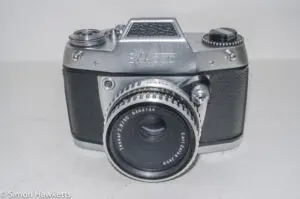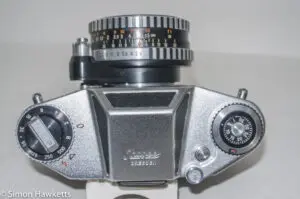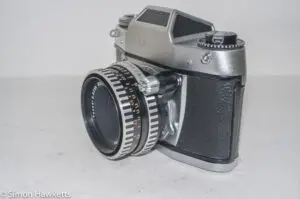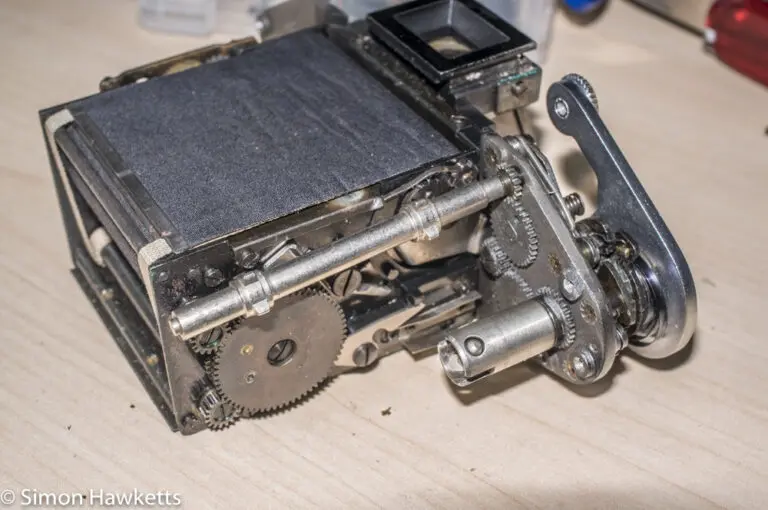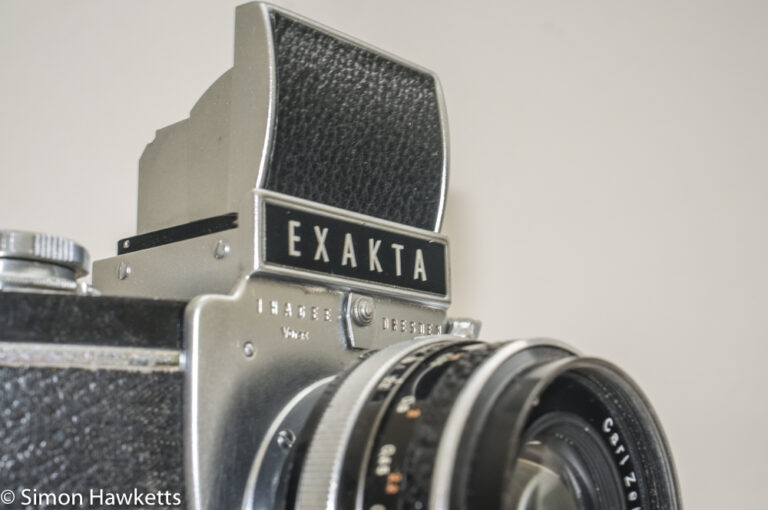Exakta Exa 500 35mm camera
The Exa line of cameras was an entry level 35 mm camera made by Ihagee in Dresden, which was started as a model for people who didn’t want to go to the expense of the company’s Exakta range. Over the years, Ihagee made several models, culminating in the Exakta Exa 500 which was the last model made.
Exakta Exa 500 Images
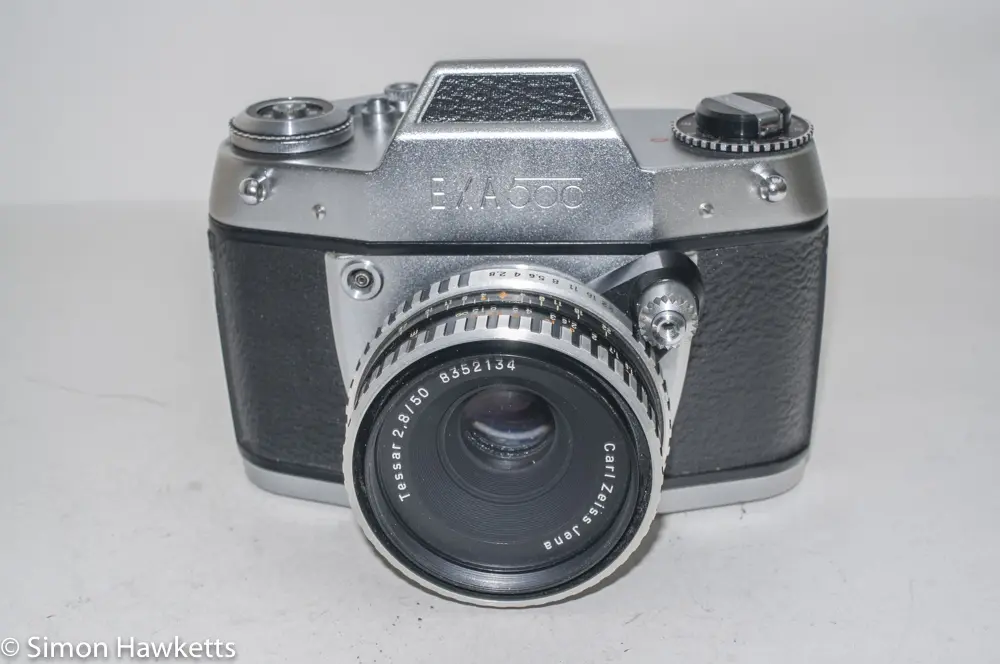
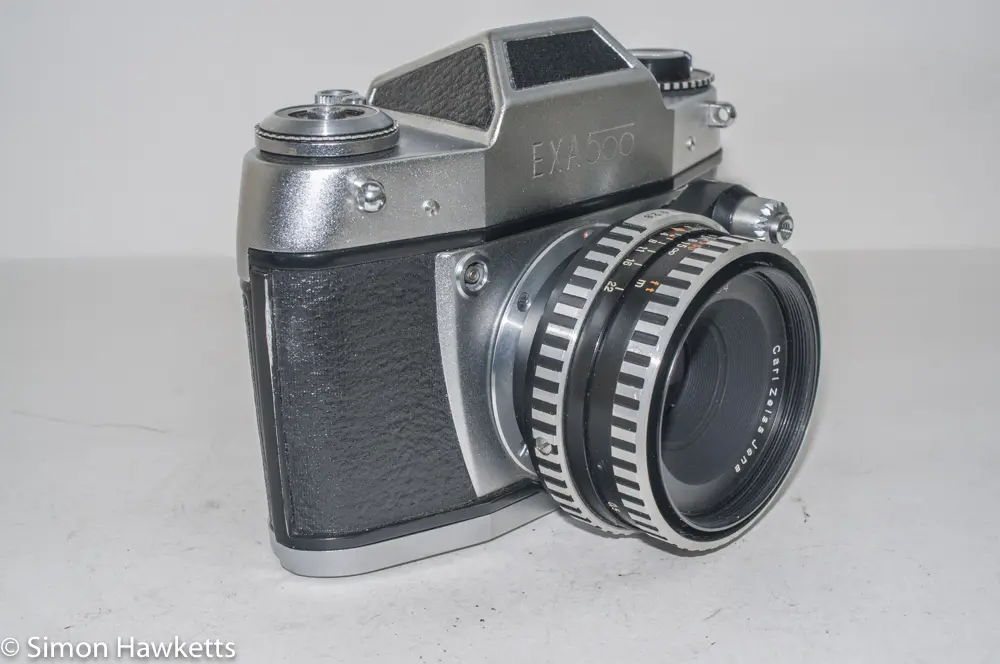
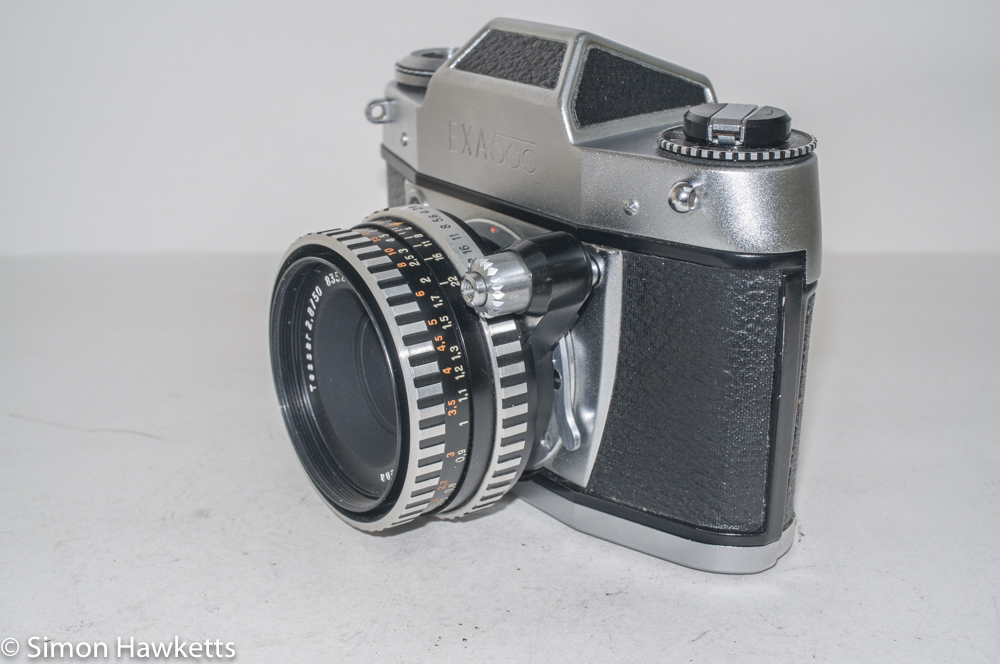
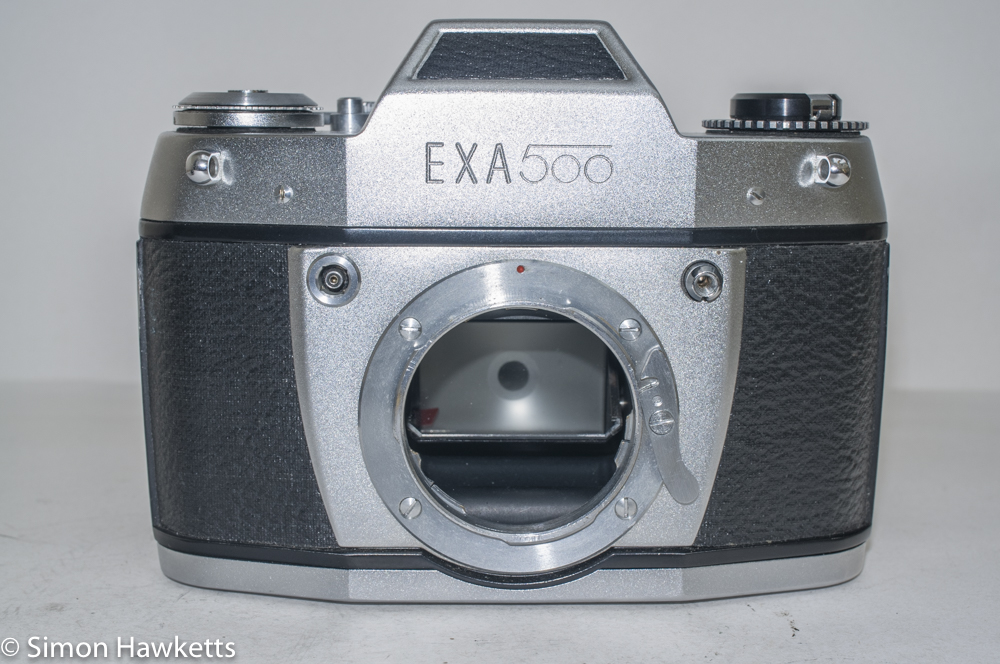
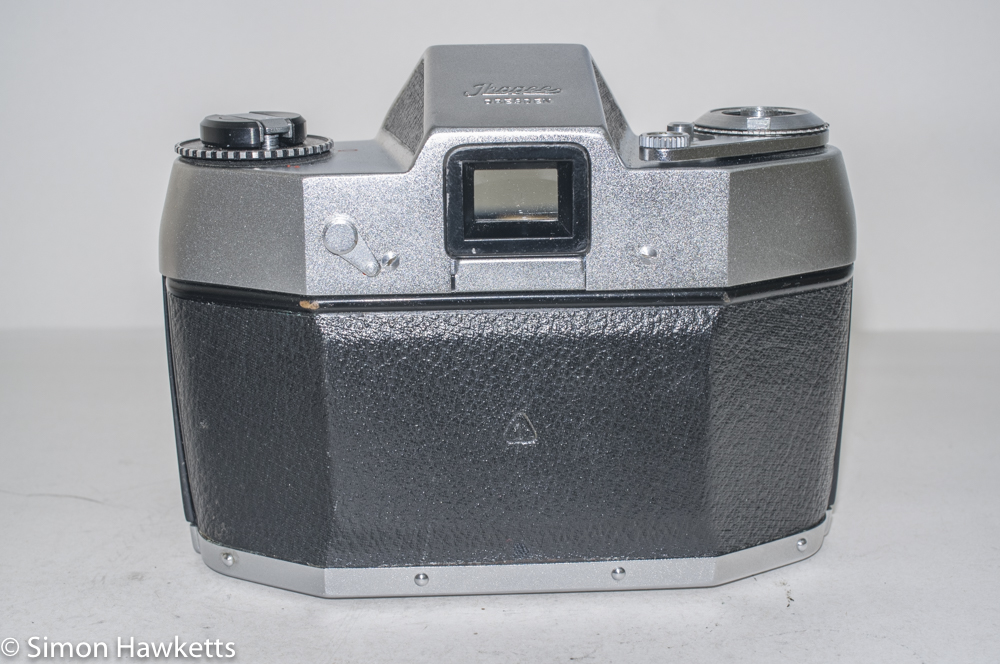
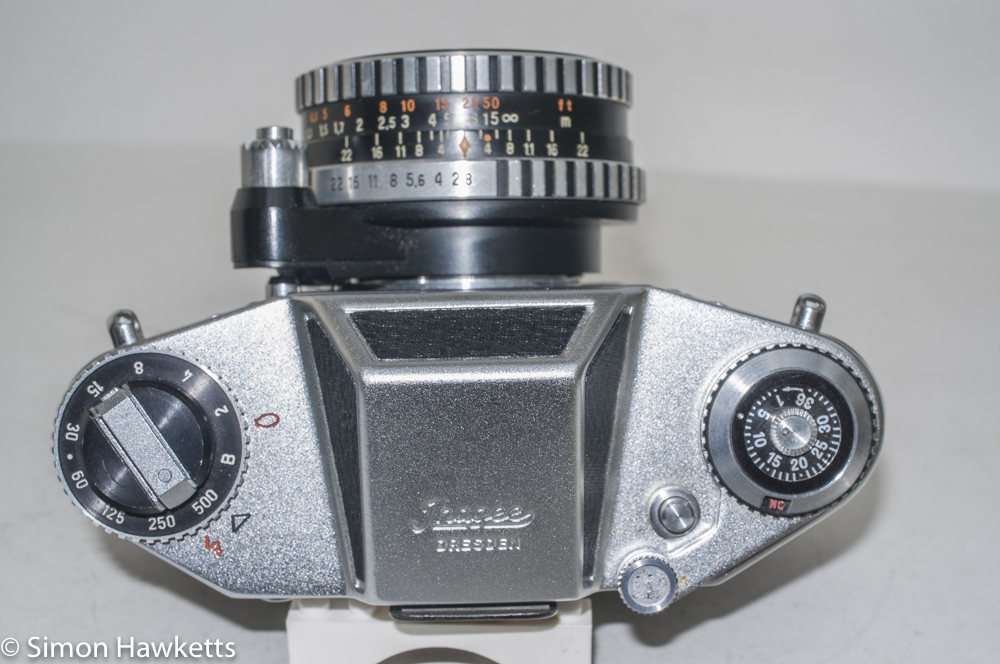

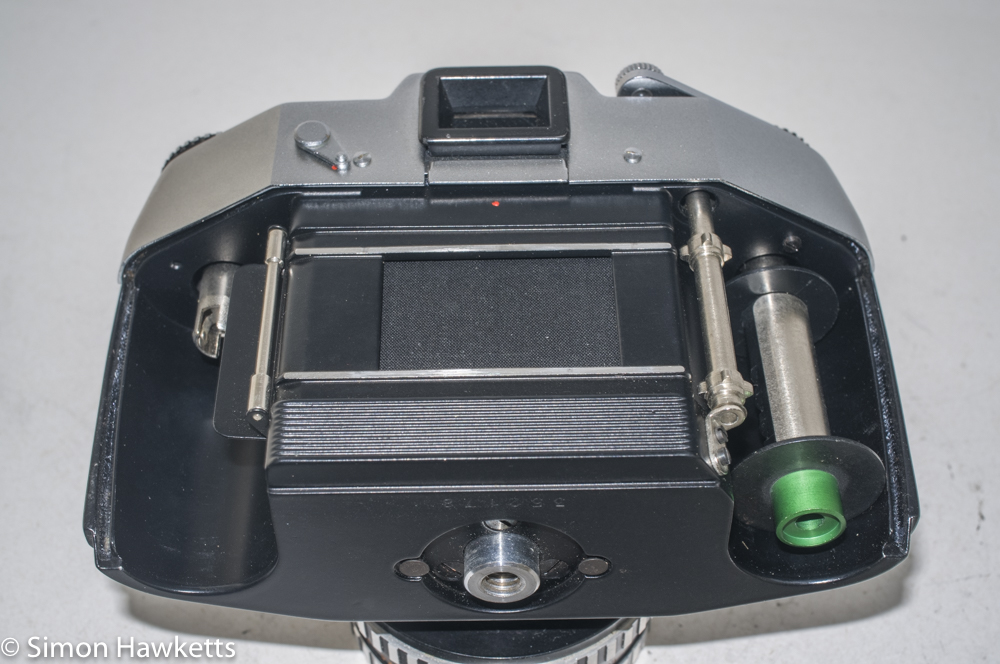
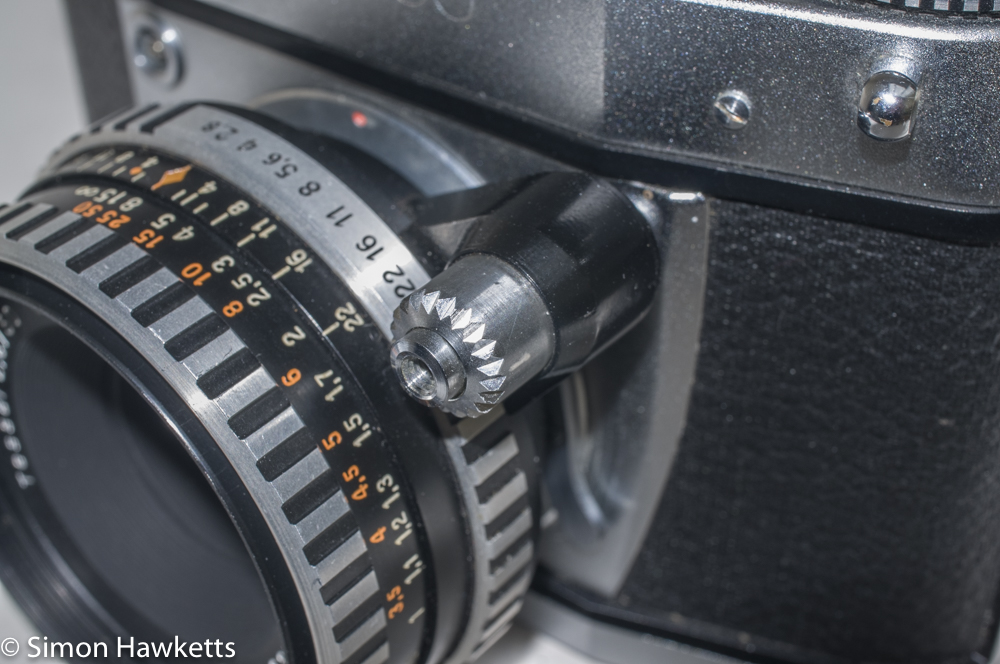
My Exakta Exa 500 Camera
I bought my copy of the Exa 500 from eBay as a non-working unit for £8-50, which included the camera body and a Carl Zeiss Jena Tessa 50 mm f/2.8 lens. Because I’d worked on the lens before, and I’ve just recently stripped down and serviced an Exa II camera, I felt reasonably confident I could get the camera working.
When it turned up a few days later, the condition was not actually too bad at all, and the only mechanical settings not working were the bulb setting and the slower shutter speeds. When set to bulb, the shutter fired at what seemed to be about 1/125 shutter speed, and the slower settings would sometimes not complete the full shutter action, leaving the curtains open for too long.
However, after a couple of days of testing the camera, the bulb setting sorted itself out, leaving only the slow shutter speeds a bit problematic. I suspect that will be relatively easy to fix once I get the camera apart.
Cosmetically the camera seems to be in a reasonable condition, although there is a small amount of paint loss on the body at the back and the small circle of black covering which should fit in the film advance lever is missing.
Ihagee Exakta Exa 500 Description
The Exa 500 is a reasonably large, heavy camera which follows the same basic design of the other fixed viewfinder models in the series – i.e. an Exakta bayonet mount, a flash sync socket on the front left-hand side and the shutter release button on the front right-hand side (when facing the camera). I find this slightly awkward, because it means the shutter needs to be fired with the left hand, but of course for left-hand photographers this camera design must be quite refreshing!
The other main controls are the film advance and the shutter speed dial. On the Exa 500 the shutter speed dial is fitted around the base of the film rewind crank as a step less dial, and the film advance is on the right-hand side and takes the form of a short throw lever. Also incorporated into the film advance lever is a dial which is set to indicate the film type and / or film speed fitted to the camera, and a count-down frame counter. The frame counter needs to be set by the photographer when the camera is loaded with film.
There are a couple of things which are obvious the first time you use an Exa 500 compared to other models in the series.
The first is the fact that the mirror has an instant return action. All other Exa models don’t have this feature, so the film has to be advanced in order to compose a picture through the viewfinder, and once the picture is taken the viewfinder will go black. With the 500, it is much more like a modern photographic experience where the shutter fires and after a very brief dark moment, the picture reappears. Because it isn’t possible to tell when looking through the viewfinder if the shutter is cocked or not, a very helpful red flag is added in the eye-line to indicate that the film advance needs to be wound.
The instant return action is not the only difference when it comes to the viewfinder compared to say, the Exa II, the viewfinder itself has some upgrades and has a Fresnel screen and micro prism centre circle to help with fine focusing. I have to say that it is quite effective and compared to the Exa II the camera is both easier to focus and also seems brighter as well.
The other easily spotable difference with the Exa 500, and the reason for the name, is the top shutter speed of 1/500sec, which is faster than all the other Exa models. Other than the top speed, the shutter setting dial is very similar to that on my Exa II and has the same mechanism for setting the flash sync speed – a small white dot on the speed dial is aligned with either a picture of a bulb (for bulb sync) or a flash symbol (for electronic flash).
The lens supplied with my copy of the camera is a Carl Zeiss Jena Tessar 50 mm f/2.8 which is fitted with an aperture control button which also presses the shutter release. This is a mechanism whereby the photographer can compose the picture with the lens aperture set to its maximum brightness and automatically stop the lens down as the picture is taken.
Basically, the lens can be preset to any aperture the lighting level calls for, but the actual blades will remain fully open until the button is pressed. Once the button is pressed, the blades close to the preset aperture setting and then a further press on the button pushes the shutter release button on the camera.
It’s a neat solution to the problem of composing and focusing with maximum brightness which was also adopted by other manufacturers – I have a Miranda D which uses the same basic process. A neat addition to this action is that the outer part of the aperture switch is knurled and if it is turned when the aperture is closed it turns the lens into a manual lens, enabling it to be stopped down with the aperture ring. This means the lens can also be used on cameras which need stop down metering (or on a modern digital).
My lens actually has a small hint of fungus on it, but I may be able to clean that off simply by unscrewing the back element – I’ll find that out later.
In common with other Exa models, there is a shutter lock on the back of the camera with stops the shutter being fired accidentally, and can also lock the shutter open for time exposures when used in conjunction with the bulb setting. Other common features include a removable take up spool which could be replaced with an empty film cartridge, a top plate mounted rewind release button and a removable case back to assist with film loading.
One uncommon addition is that the light seal that the mirror sits on when in the raised position is made of a medium hard rubber, rather than a foam. I don’t know if this is because it has been changed on my copy or is original, but it is certainly in much better condition than the seal normally found on a camera of this age.
Ihagee Exakta Exa 500 Specification
- Ihagee Exakta Exa 500 35mm slr camera
- Instant return mirror
- Exakta bayonet mount
- Front mounted shutter release
- Fresnel screen and micro prism focusing aid
- Vertical travel cloth shutter
- 1/2sec to 1/500sec + Bulb
- Synced for bulb or electronic flash
- Shutter lock which also acts as T shutter speed
- Film type / speed reminder
- Top plate rewind release
- Removable case back
- Count down frame counter
- Front strap lugs
- Threaded cable release socket on shutter release
- Body Ser No: 352178
- Lens Ser No: 8352134
- On line manual available here
Discover more from Everything Vintage
Subscribe to get the latest posts sent to your email.

